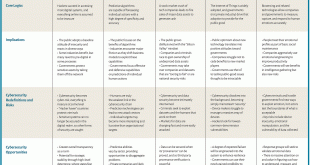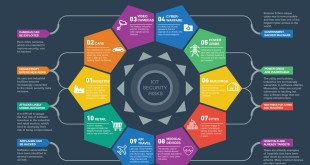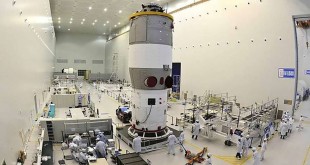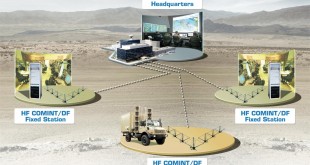Cyber attacks are continuously increasing in numbers, becoming more varied more sophisticated, and more impactful. What Will Cybersecurity Look Like 10 Years From Now? According to Gil Shwed, Founder and CEO of Check Point Software Technologies Ltd., the future of cybersecurity is tightly connected to the future of information technology and …
Read More »Monthly Archives: March 2018
DARPA’s LADS program to secure Military Internet of things (MIOT) from cyber and other attacks from adversaries, hackers, and terrorists.
The Internet of things (IoT) is the network of physical devices, vehicles, home appliances and other items embedded with electronics, software, sensors, actuators, and connectivity which enables these objects to connect and exchange data. Each thing is uniquely identifiable through its embedded computing system but is able to inter-operate within the …
Read More »China have successfully demonstrated a cold atom clock in space, would allow Beidou satellite navigation network to offer precise guidance like the US GPS system
GPS has become ubiquitous technology that provides real-time positioning, navigation and timing (PNT) data in cars, boats, planes, trains, smartphones and wristwatches, and has enabled advances as wide-ranging as driverless cars, precision munitions, and automated supply chain management. Phones and other GPS-enabled devices pinpoint your location on Earth by contacting …
Read More »New Shape memory alloys (SMAs) and shape memory materials (SMMs) for robotics and automotive, aerospace and biomedical industries.
SMAs are materials that can be deformed at low temperature and recover their original shape upon heating. Shape memory alloys (SMAs) belong to a class of shape memory materials (SMMs), which have the ability to ‘memorise’ or retain their previous form when subjected to certain stimulus such as thermo mechanical …
Read More »US DOD developing space surveillance, Rendezvous and Proximity Operations capability in geosynchronous orbit for space deterrence
The most important element of space is geosynchronous orbit, a circular orbit 22,300 miles above the planet where satellites appear to be stationary above the surface of the earth. British science fiction writer, futurist and inventor Arthur C. Clark mathematically determined the orbit in 1947, the general said. The …
Read More »Indian Army looks to tap renewables to supply power military installations and soldiers in high altitude areas such as Ladakh.
Ladakh accounts for more than two-thirds of the land area of the Indian state of Jammu & Kashmir. As a high altitude cold desert, though, it hosts only about 5% of the state’s population. With the mercury dipping to minus 20 degrees Celsius or lower during winter nights, and about minus …
Read More »New HF COMINT systems are being introduced to intercept communications of militaries, terrorists, illegal immigrants, pirates and illegal fishermen
All modern forces depend on unimpeded access to, and use of, the EM spectrum in conducting military operations. Therefore, there is a requirement to gain and maintain an advantage in the electromagnetic spectrum by countering adversary’s systems and protecting one’s own systems. Adversary can disrupt and degrade the navigation systems …
Read More »Nanofluids for thermal management of Space and Nuclear systems, military vehicles and submarines, power electronics and directed-energy weapons
Because of higher density chips, the design of more compact electronic components makes heat dissipation even more difficult. All advanced electrical or electronic devices are facing heat management challenges due to the increased levels of heat generation and the reduction in the surface area for heat rejection or dissipation. So …
Read More »Navies plan to use Intelligent Virtual Assistant (IVA) and Deep Machine Learning (DML) technologies to enhance situational awareness and battlespace decision making
Autonomous systems are increasingly critical to several current and future Department of Defense (DoD) mission needs. For example, the U.S. Army Robotics and Autonomous Systems (RAS) strategy report for 2015-2040 identifies a range of capability objectives, including enhanced situational awareness, cognitive workload reduction, force protection, cyber defense, logistics, etc, that …
Read More »New electronic components and materials for extreme environments like Hypersonic flight , Planetary exploration and Military Systems
“Electronics have dramatically changed the way we live, conduct business, communicate, and educate. Visions of the future foretell of ubiquitous computing and sensing. However, the environments in which electronics can reliably operate are limited. In consumer applications, typical operating temperatures range from -40° to 85°C. The “wider” military temperature range …
Read More » International Defense Security & Technology Your trusted Source for News, Research and Analysis
International Defense Security & Technology Your trusted Source for News, Research and Analysis









